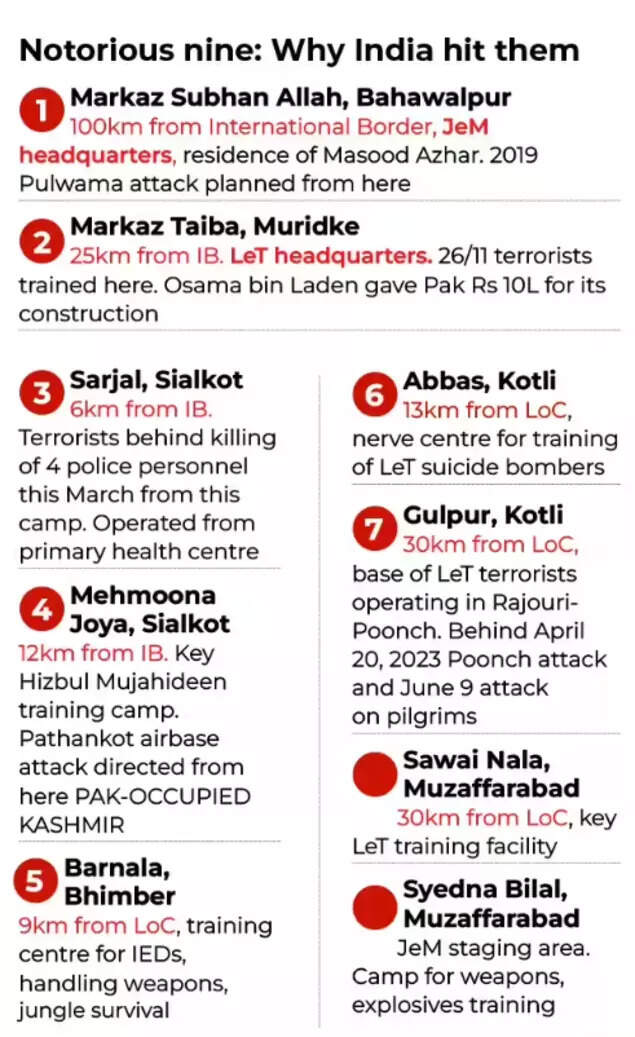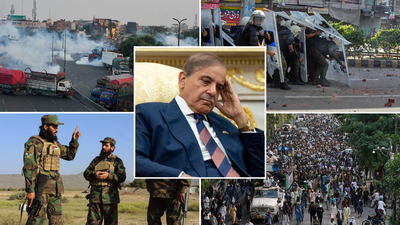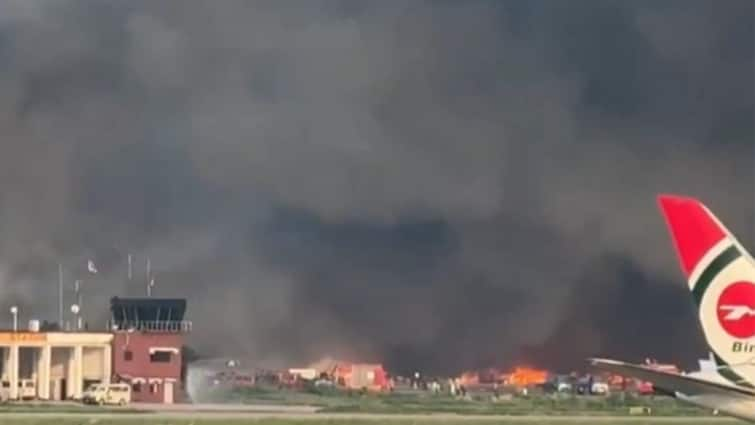“You can’t keep snakes in your backyard and expect them only to bite your neighbours.”External affairs minister S Jaishankar issued a stern warning to Pakistan at the United Nations in 2022. Three years later, Pakistan is yet to mend its ways, and the warning rings truer than ever. Then, both leaders accused Pakistan of nurturing terror groups for strategic leverage. Now, the country is confronting the full consequences of that strategy.
The irony of a familiar battlefield
Pakistan is in turmoil at all fronts, and at the centre of the latest crisis lies Muridke – the same city India struck during Operation Sindoor, a swift 22-minute campaign that targeted terror hubs including Markaz Taiba, the headquarters of Lashkar-e-Taiba.This week, Muridke is again in the spotlight as it turned volatile after Pakistan’s law enforcement cracked down on a protest camp organised by Tehreek-e-Labbaik Pakistan (TLP). The government action has triggered violent clashes, arrests, and growing instability across the region.Also read: Pakistan blames Afghanistan for terror; makes absurd India claimIn a move dripping with irony, the provincial chief minister chaired what her office called an “extraordinary” meeting, ordering arrests of “extremist leaders” and seizure of assets linked to the same group once courted by the establishment.
What’s happening?
Over 2,700 people have been detained, and Section 144 has been imposed across Punjab, banning gatherings and protests. Mosques associated with the TLP have been sealed, its social media accounts suspended, and its top brass is being added to Pakistan’s Fourth Schedule—a list of individuals suspected of terrorism or sectarianism.Also read: Political crisis in PoJK – 3 ministers resignOfficials have also announced plans to recommend a federal ban on the party, freeze its assets, and prosecute its leaders under anti-terror laws. AI tools are being deployed to track wanted individuals.Authorities say the TLP’s so-called “Gaza solidarity” march to Islamabad had turned, as one official put it, “bloody as always.”
Operation Sindoor and the Muridke connection
The timing and geography of the crackdown are significant. Muridke was among the nine key sites targeted during Operation Sindoor in May following the Pahalgam terror attack that killed 26 civilians.During the four-day campaign, the Indian Air Force destroyed at least six Pakistani fighter jets, two high-value surveillance aircraft, a C-130 transport plane, over ten drones, several cruise missiles, and radar installations.

One of its central objectives was Markaz Taiba, Lashkar-e-Taiba’s nerve centre in Muridke — just 25 km from the International Border. The facility, built with donations reportedly including Rs 10 lakh from Osama bin Laden, trained the 26/11 Mumbai attackers.
A state at war with itself
For decades, Pakistan’s national security doctrine rested on militant proxies—to gain “strategic depth” against India and influence over Afghanistan. That policy has now imploded.Islamabad is fighting multiple insurgencies at once – from the Tehreek-e-Taliban Pakistan (TTP) in Khyber Pakhtunkhwa to the Baloch Liberation Army (BLA) in Balochistan, and even rogue Taliban factions across the Durand Line.According to the Centre for Research and Security Studies (CRSS), more than 2,400 security personnel have been killed in 2025 so far—the bloodiest year since 2015. The violence is now driven by what analysts call a “Quad of Terror”: the TTP, Baloch insurgents, Islamic State–Khorasan (IS-K), and Taliban breakaway groups. Since the Taliban’s 2021 takeover of Kabul, Pakistan’s western frontier has unravelled. The TTP, long sheltered in Afghanistan, now launches near-daily attacks. The BLA targets Chinese projects in Gwadar and convoys in Balochistan. Despite repeated military operations, the insurgency only appears to be deepening.
An imploding picture
Drone strikes, air raids, and mass arrests have failed to stem the violence. Meanwhile, reports of enforced disappearances, civilian casualties, and militarisation have eroded public trust, especially in Balochistan.The TLP ban, border tensions with Afghanistan, and the fallout of Operation Sindoor together expose a grim truth that India has warned of several times: Pakistan’s long experiment with extremism has backfired catastrophically.When Hillary Clinton stood beside then-foreign minister Hina Rabbani Khar, in 2011 and delivered the “snakes in your backyard” warning, it was a diplomatic metaphor. Today, it’s Pakistan’s reality.What began as a policy of control has spiralled into a crisis of survival. Pakistan’s greatest threat is no longer at its borders – it’s the legacy of its own choices. Go to Source



